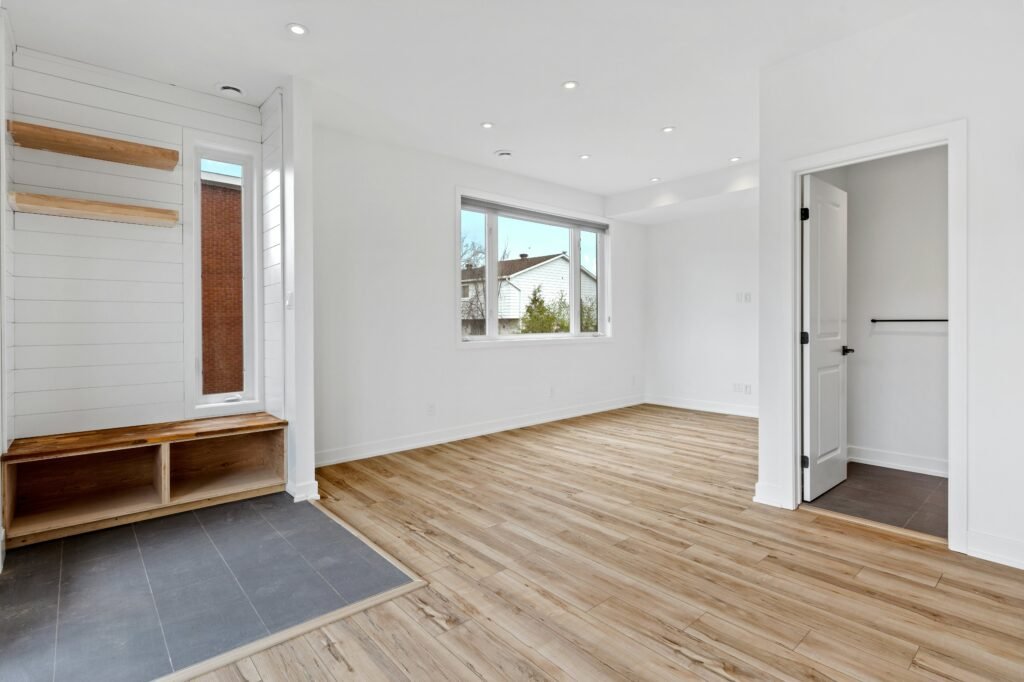Vacant Staging in Home Staging & Interior Design:
Staging an empty property to help potential buyers visualize its potential and imagine themselves living there.

The Importance of Vacant Staging in Home Staging – Why it’s Something to Consider
Vacant Staging involves furnishing and decorating an empty property to enhance its appeal"Appeal" in Home Staging & Interior Design: The overall attractiveness and desirability of a property to potential buyers, influenced by factors like curb appeal, layout, functionality, and staging. The Importance of Appeal In Home Staging - Why It's Something to Consider Appeal, in the context .... This type of staging is important as vacant homes can often feel"Aesthetic" in Home Staging & Interior Design: The overall feeling or vibe of a space, encompassing the chosen style, color palette, textures, and furniture, and evoking a specific mood or impression. The Importance of Aesthetic In Home Staging - Why It's Something to Consider Aesthetic, encompa... impersonal and cold, making it difficult for buyers to envision themselves living there. Staging a vacant property can transform it into a welcoming and attractive space, highlighting its potential and functionalityFunctionality in Home Staging & Interior Design: The ability of a space to serve its intended purpose efficiently and comfortably. Staging considers furniture function, traffic flow, and accessibility to optimize everyday living. The Importance of Functionality in Home Staging - Why it's Somethi....
In vacant staging, it’s crucial to create an inviting atmosphere that appeals to a broad range of buyers. This includes selecting appropriate furniture, accessories"Accessories & Antiques" in Home Staging & Interior Design: Decorative elements like vases, sculptures, throws, or vintage finds that personalize a space, add texture and pops of color, and tell a story about the homeowner's style. The Importance of Accessories & Antiques In Home Staging..., and decor that complement the space and styleStyle in Home Staging & Interior Design: The overall aesthetic or design language chosen for a space, influencing furniture selection, décor, color palette, and textures. The Importance of Style in Home Staging - Why it's Something to Consider The Style chosen in home staging sets the overall t... of the home. Vacant staging can greatly influence a buyer’s perceptionStaging Psychology in Home Staging & Interior Design: Understanding the psychological impact of space on potential buyers and utilizing staging techniques to evoke positive emotions. The Importance of Staging Psychology in Home Staging - Why it's Something to Consider Staging Psychology involves... of the property, making it a key consideration in the sales strategy.
Tips and Best Practices when Vacant Staging in Home Staging
Vacant staging involves furnishing an empty property to showcase its potential. It’s a powerful tool to help buyers visualize the space as their future home. Here are the best practices:
Furnish Key Rooms: Focus on staging key areas like the living room, dining room, kitchen, and master bedroom. These are the rooms that most influence buyers’ decisions.
Neutral and Stylish Furnishings: Use neutral, stylish furnishings that appeal to a wide range of buyers. Avoid overly bold or personal styles that might not resonate with everyone.
Create a Welcoming Atmosphere: Even in a vacant property, aim to create a warm and inviting atmosphere. This can be achieved with the right choice of furniture, soft furnishings, and thoughtful accessorizing"Accessorizing" in Home Staging & Interior Design: The act of adding decorative elements to a space, like placing throw pillows on a sofa or arranging books on a coffee table, to complete the look and inject personality. The Importance of Accessorizing In Home Staging - Why It's Something to Con....
Highlight the Functionality of Spaces: Use furniture and decor to define areas and demonstrate how they can be utilized, such as showingWalk-Through in Home Staging & Interior Design: A tour of a staged property with a potential buyer, highlighting key features and answering questions. The Importance of a Walk-Through in Home Staging - Why it's Something to Consider A Walk-Through is a critical step in the home staging process, ... a potential home office or breakfast nook.
Quality Over Quantity: Choose a few high-quality pieces over a larger number of lower-quality items. Quality staging can elevate the perceived value of the property.
Focus on Scale and ProportionScale and Proportion in Home Staging & Interior Design: The relationship between the size and dimensions of furniture, objects, and architectural elements within a space. The Importance of Scale and Proportion in Home Staging - Why it's Something to Consider Scale and Proportion in home staging ...: Ensure that the scale of the furniture matches the sizeFurniture Scale in Home Staging & Interior Design: The size and proportion of furniture relative to the space it occupies. Proper scale ensures comfortable movement, avoids overcrowding, and balances the visual composition. The Importance of Furniture Scale in Home Staging - Why it's Something t... of the rooms. Oversized furniture can make a space feel smaller, and vice versa.

